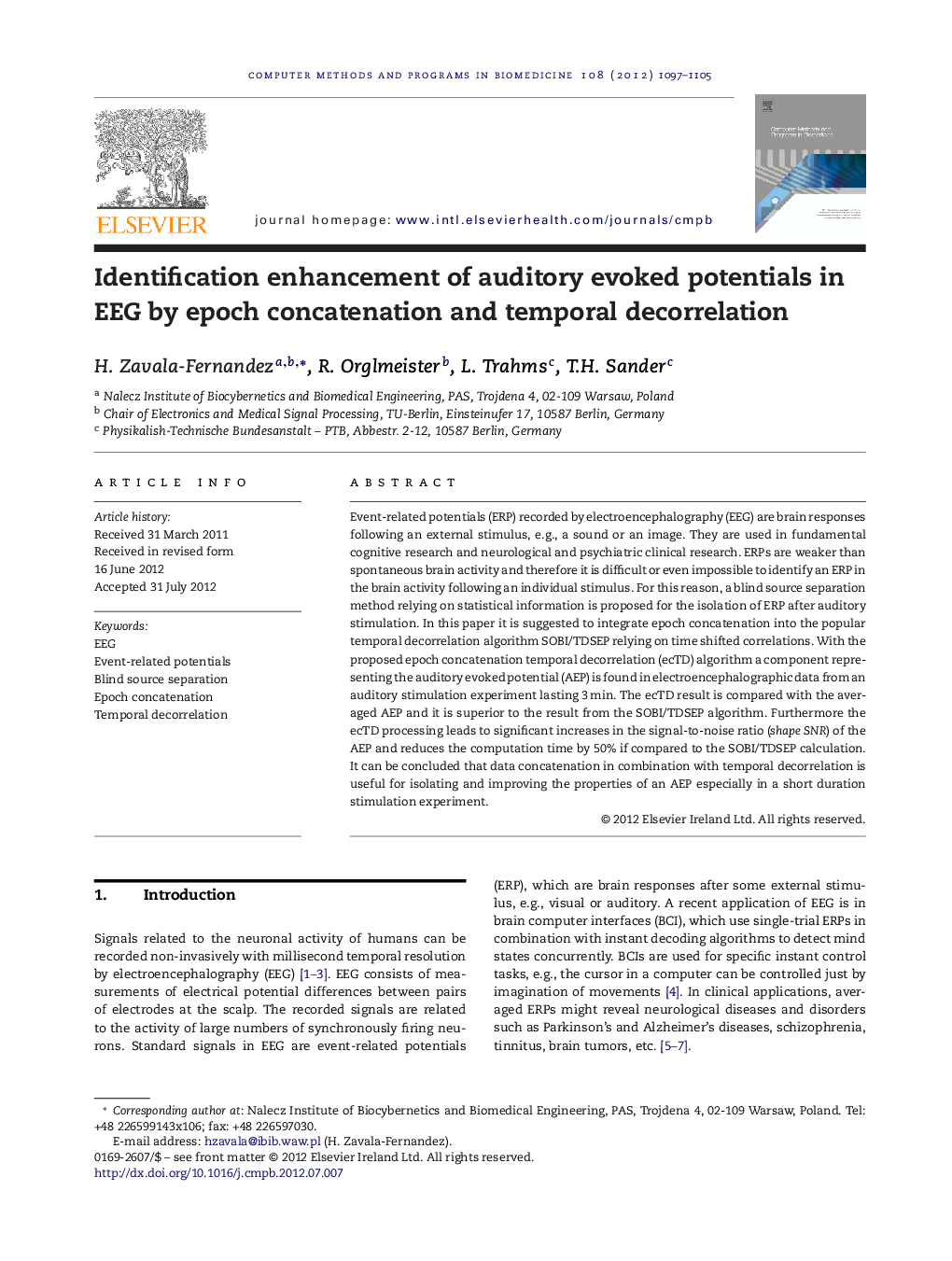| Article ID | Journal | Published Year | Pages | File Type |
|---|---|---|---|---|
| 10344593 | Computer Methods and Programs in Biomedicine | 2012 | 9 Pages |
Abstract
Event-related potentials (ERP) recorded by electroencephalography (EEG) are brain responses following an external stimulus, e.g., a sound or an image. They are used in fundamental cognitive research and neurological and psychiatric clinical research. ERPs are weaker than spontaneous brain activity and therefore it is difficult or even impossible to identify an ERP in the brain activity following an individual stimulus. For this reason, a blind source separation method relying on statistical information is proposed for the isolation of ERP after auditory stimulation. In this paper it is suggested to integrate epoch concatenation into the popular temporal decorrelation algorithm SOBI/TDSEP relying on time shifted correlations. With the proposed epoch concatenation temporal decorrelation (ecTD) algorithm a component representing the auditory evoked potential (AEP) is found in electroencephalographic data from an auditory stimulation experiment lasting 3Â min. The ecTD result is compared with the averaged AEP and it is superior to the result from the SOBI/TDSEP algorithm. Furthermore the ecTD processing leads to significant increases in the signal-to-noise ratio (shape SNR) of the AEP and reduces the computation time by 50% if compared to the SOBI/TDSEP calculation. It can be concluded that data concatenation in combination with temporal decorrelation is useful for isolating and improving the properties of an AEP especially in a short duration stimulation experiment.
Related Topics
Physical Sciences and Engineering
Computer Science
Computer Science (General)
Authors
H. Zavala-Fernandez, R. Orglmeister, L. Trahms, T.H. Sander,
